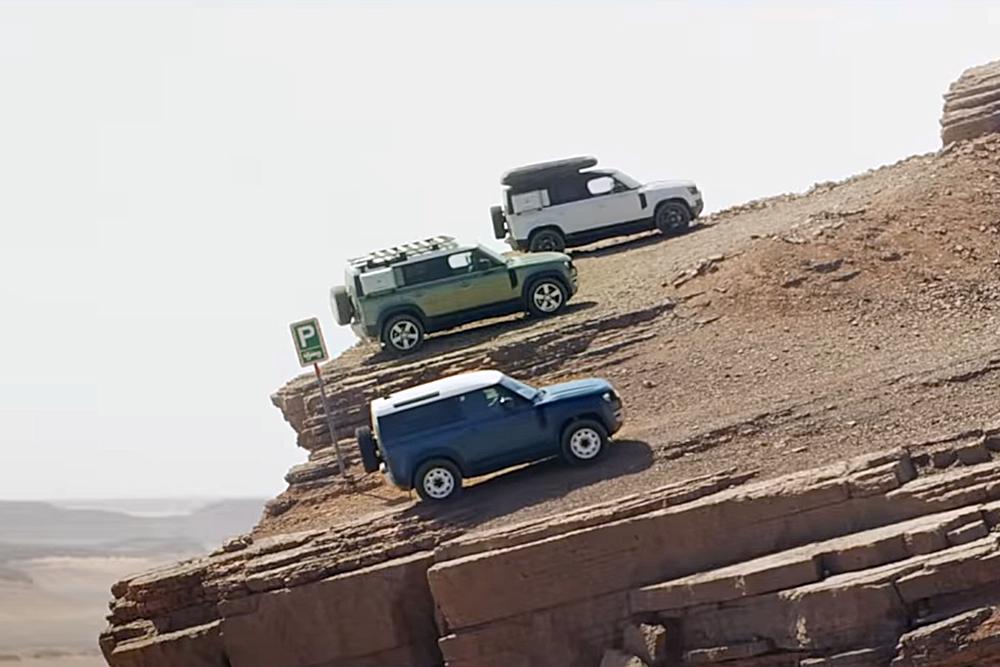
UK bans Land Rover ad for showing cars on rock
Content
Land Rover was forced to remove one of its UK advertisements after receiving two complaints. The ad was banned for misleading viewers about the safe and proper use of parking sensors.
ATV manufacturers love to show off their vehicles by doing what they do best. Whether you're hovering over desert sands or scrambling over rocky outcrops, it's all fair game when it comes to advertising. A recent ad hoped to do just that, but was eventually banned in the UK due to a dangerous lack of realism.
How is the Land Rover Defenders announcement coming along?
The ad starts quite simply: Land Rover Defenders get off the boat and drive through the city and the desert. However, it was the end of the ad that sparked the ire. The last shots show how two "Defenders" parked at the edge of the cliff, and a third backs away instead. When the driver pulled up to the curb, the parking sensors beeped, signaling the driver to stop. The Defender stops, parked near the slope into the valley below.
The ad drew immediate complaints.
Two complaints have been filed with the UK's Advertising Standards Authority (ASA) condemning the advertisement for its dangerous and misleading content. The concern was that current vehicle parking sensors cannot detect empty spaces or the edge of a cliff, as shown in the video. Its ultrasonic sensors can only detect solid objects behind the vehicle. If the driver had to rely on the parking sensors when backing up a cliff, he would simply drive off the edge and the parking sensors wouldn't make a sound.
Land Rover defends and justifies its video
Jaguar Land Rover noted concerns about the parking sensor's function, but responded that footage in the ad "clearly showed it backing into rock", which could have triggered the sensors.
It will surprise few people that the ASA did not accept this application. Authorities responded that it was "not obvious" that the sensors were reacting to rocks in the frame, which were thought to be random at the scene. While some rocks are visible in the Defender's reversing display shot, it's unlikely that the parking sensors will trip on these small, low-to-ground debris.
Misleading and risky advertising to other drivers
Summing up their decision, the ASA noted that "we believe some viewers interpret this to mean that parking sensors can recognize when drivers might reverse near a cliff, which could include a smaller hill edge or a fall before it hits the water." . in road areas, both in urban and more rural settings.”
Going on to cover Jaguar's objections, the authority added that "because we understood that the car's parking sensors reacted to objects behind the vehicle, rather than to empty space such as a fall, and rocks were not strong enough. To counter that interpretation, we concluded that the ads misrepresented the function of the parking sensor."
Advertising regulators always look down on misrepresentation, but in this case, there is also a significant safety factor to consider. A driver who happened to see the ad and tried to use the parking sensors on a cliff would be at risk of serious injury or even death if the worst were to happen.
Land Rover lost the battle
The ASA's decision means Jaguar Land Rover cannot re-run ads in the UK. The company was "very disappointed" with the decision and backed up its claim that "the vehicle, the technology and the scene presented are true".
However, the rules are the rules, and the company noted that "of course, we will comply with their decision, which was based on only two complaints."
**********
: